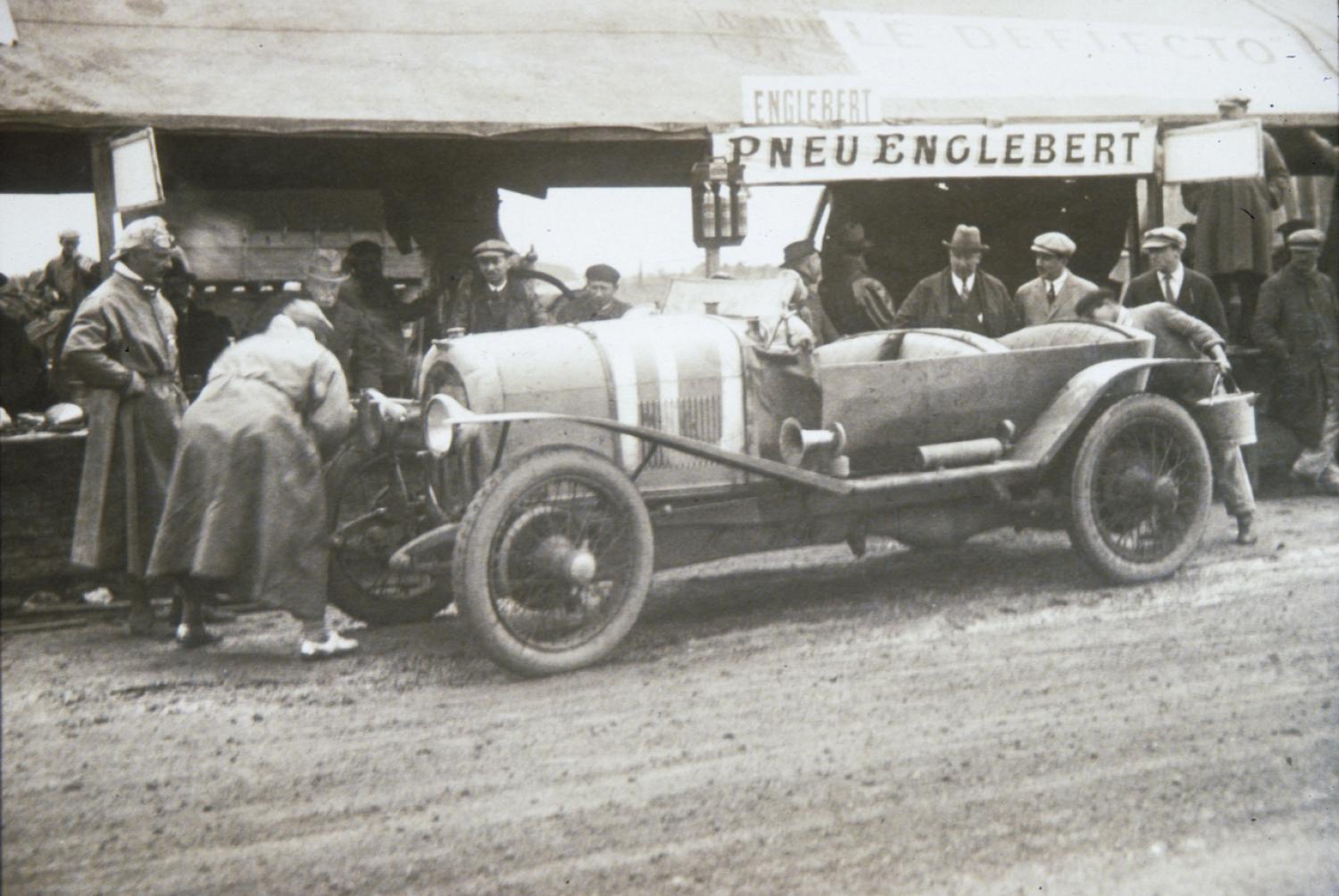This new tyre boasted a fundamental difference in design compared to the diagonal casing primarily used up until that point.
From diagonal to radial
For a car to be efficient on the road, it needs the right tyres. They ensure the connection between the car and the ground and, through grip, contribute to road holding in all types of weather conditions: dry cold, wet cold, wet, snow, ice, etc. They also affect a car's suspension by adapting in shape depending upon their load. The lateral change must be minimal to preserve road holding, ensuring their tread remains in maximum contact with the asphalt.
To meet these sometimes contradictory requirements, tyres are meticulously manufactured, composed of interlaced iron wires or synthetic materials to ensure the rigidity of the tyre and its attachment to the rim. The assembly is then covered with different layers of rubber and baked in a mold at high temperature to agglomerate the rubber and fix it to the structure. It is during this stage, called vulcanisation, that the mold creates the tyre tread.
Treads are obviously crucial as they allow water to drain away in the rain. The grooves have to be deep enough to evacuate enough water (up to 60 litres/second!), but the rubber sections must be rigid enough not to deform or tear off when cornering.
After years of using patterned tyres in competition, finally between 1965-1970 it was realised tyres without patterns were much more efficient on a dry track. Smooth tyres called slicks were provided along with those with tread patterns, deep for full rain and less marked for drying conditions.
Tyre structure, since the creation of the inflatable wheel, was designed the same way. The interlacing of metallic then nylon threads was done by assembling layers diagonally on the surface of the tyre, from one sidewall to the other, with an optimal angle between them of 50 to 55 degrees. This design resulted in very solid tyres, especially the sidewalls made with the same layers as the tread. On the other hand, any deformation of the sidewall has direct repercussions on the tread and reduces the tyre's grip on the ground.
The Michelin X
Shortly after World War II, Michelin's engineers produced a radial tyre called the Michelin X. The metal carcass included wires positioned radially on the wheel along the sidewalls, then others interlaced in Xs to support the tread. The hoops for attaching the tyre to the wheel were fixed to the radial layers, and the vulcanisation process that allowed these components to come together remained the same.
This design carries the advantage of minimising impact on the sidewalls and tread. Any vertical force undergone by the tyre is absorbed by the radial structure and does not affect the tread. So, the tyre offers much more constant road holding under stress, especially in corners, and also provides a more comfortable ride by assisting the suspension. On the other hand, the sidewalls are more susceptible to hard or sharp objects on the road, like stones, which tend to pass more easily between the threads of the radial carcass.
Slowly but surely, the radial design proved its superiority over diagonal on the open road. However, there remained one domain in which Michelin had to prove its merits: competition. In the mid-1970s, the French manufacturer launched two programmes under the leadership of Pierre Dupasquier: in Formula 1 with Renault and Ferrari, and at Le Mans for Renault-Alpine turbocharged prototypes. In 1977, the Alpine A442s dominated the Porsches in terms of performance, culminating the following year in a first win for the radial tyre at the 24 Hours with at the wheel Jean-Pierre Jaussaud/Didier Pironi. Four and a half months later, on 29 January 1978, Michelin clinched its first F1 victory at the Brazilian Grand Prix thanks to the Ferrari 312 T2 driven by Argentinian driver Carlos Reutemann.
Since then, radial tyres have become commonplace in the automotive industry. But, diagonal tyres nevertheless remain more appropriate in certain areas, like motorcycles (which make the sidewalls work like a tread when the bike leans into a corner) and agricultural or construction machinery (for the durability of the sides on rough terrain).
PHOTOS (Copyright - ACO/Archives): LE MANS (SARTHE, FRANCE), CIRCUIT DES 24 HEURES, 1923-1978 24 HOURS OF LE MANS. From top to bottom: 55 years separate these two photos and Michelin's first two wins at the race, with the one-two of Chenard & Walcker in 1923 (here the car of Raoul Bachmann/Christian Dauvergne, second) and the first victory for a radial tyre in 1978, with the Renault-Alpine of Jean-Pierre Jaussaud/Didier Pironi. Ahead of the Centenary, the French manufacturer boasts 31 victories, slowing catching up to Dunlop's record 34.


